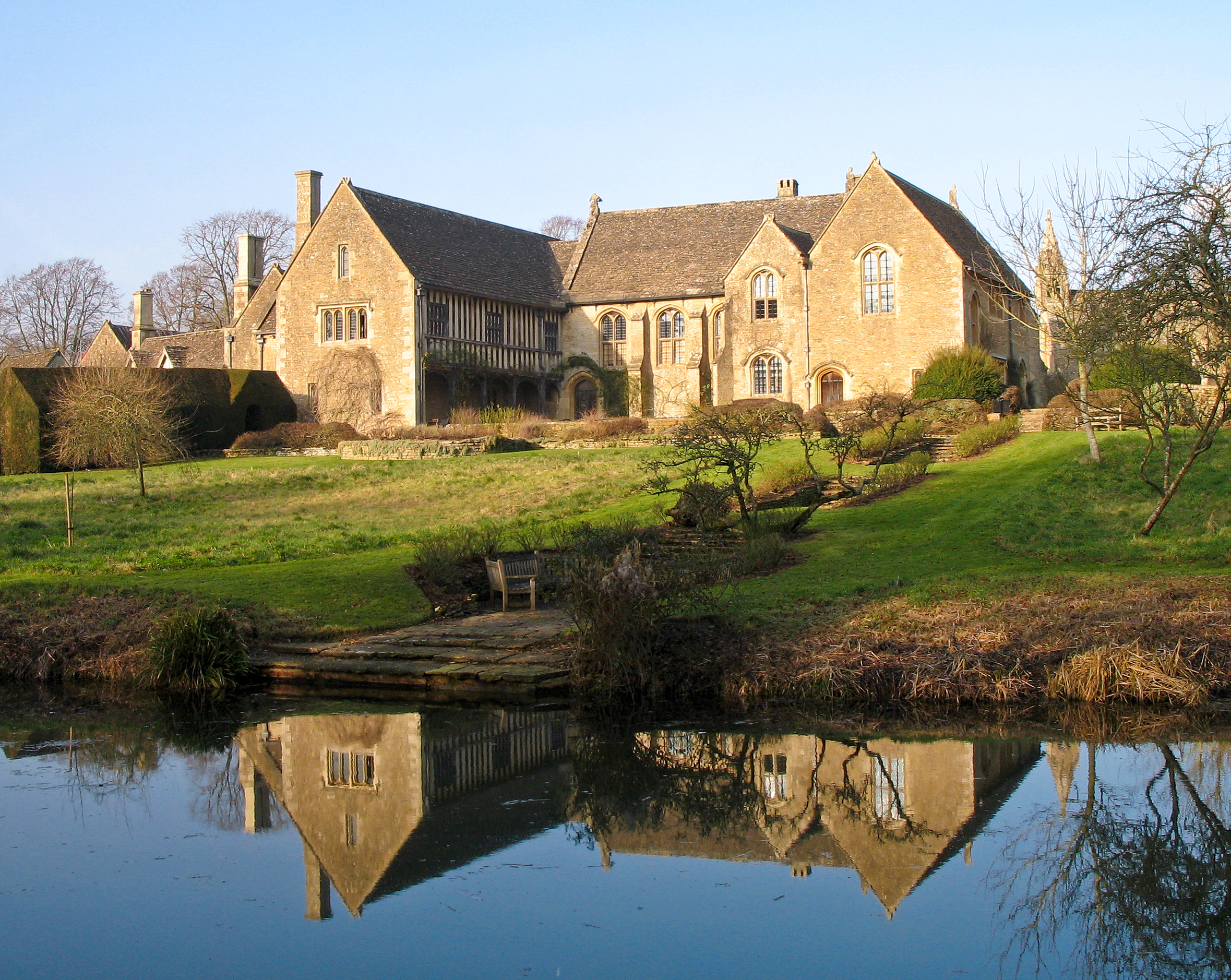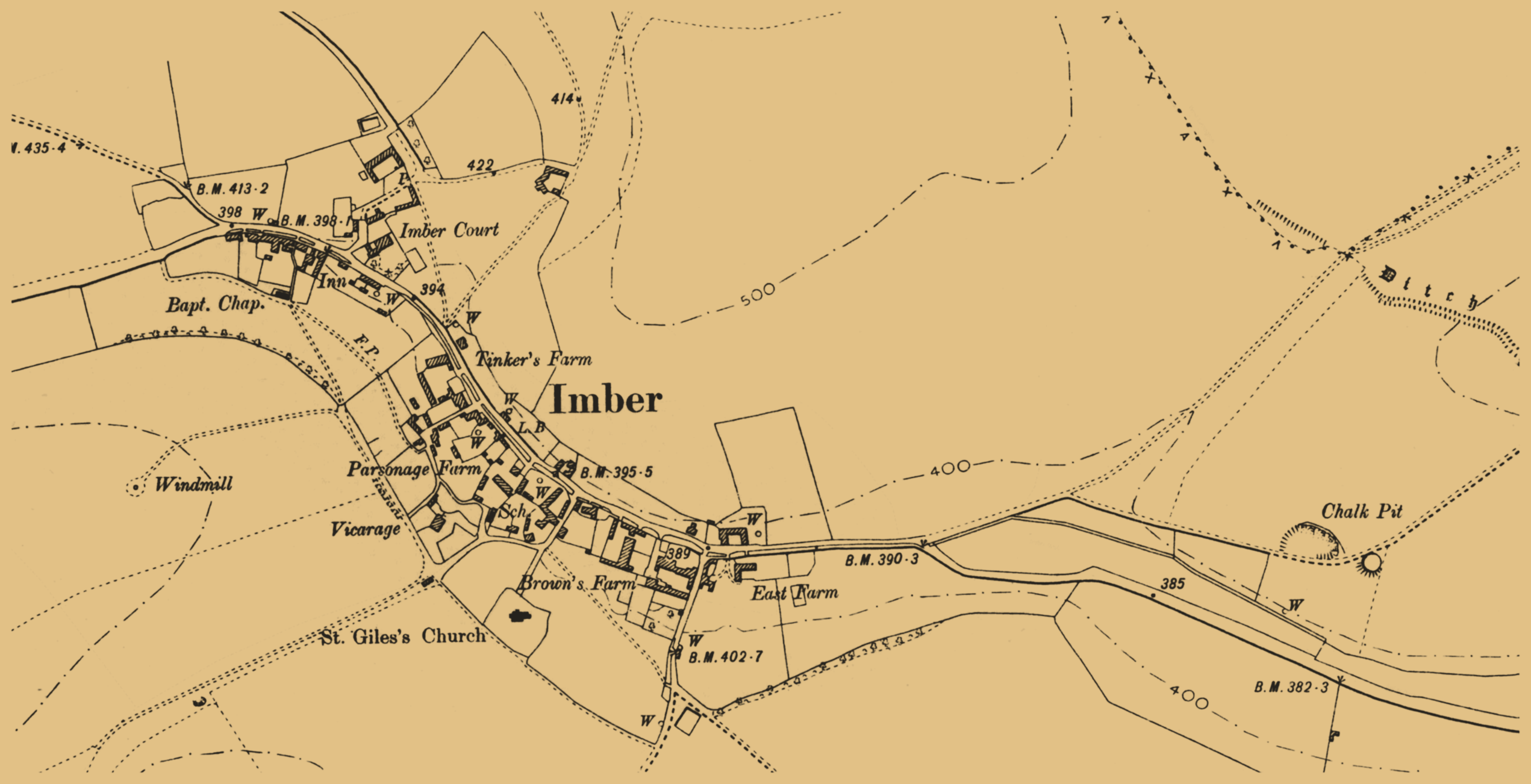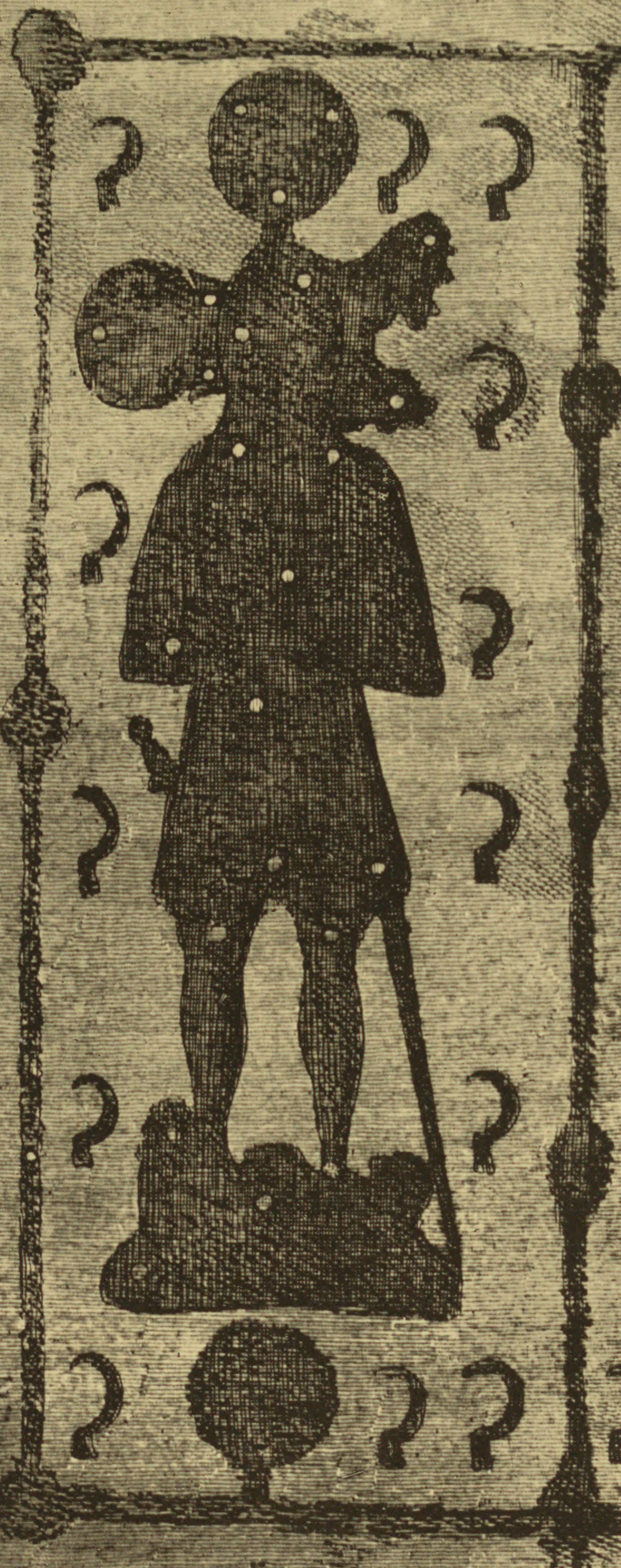|
Thomas Tropenell
Thomas Tropenell, sometimes Tropenelle and Tropnell ( 1405 – 1488), was an English lawyer and landowner in Wiltshire in the west of England. He acquired large estates, built Great Chalfield Manor, and compiled the '' Tropenell Cartulary''. Background Tropenell, later of Great Chalfield, Neston, and Salisbury, was born about 1405, the son of Henry Tropenell and his wife, Edith, who was the daughter of Walter Roche.J. T. Driver, 'A Perilous, Covetous man: the career of Thomas Tropenell, Esq. (c. 1405–88)' in ''The Wiltshire archaeological and natural history magazine'' vol. 93 (2000), pp. 83–87 Augustus Pugin, in a chapter on Great Chalfield in his ''Examples of Gothic architecture'', gives a pedigree of the Tropenell family stated to be taken from "a MS now in the possession of William Waldron, Esq." According to this, "long before the time that no mind renueth, and before the conquest" a Wiltshire knight named Sir Osbert Tropenell was lord of the whole lordship of S ... [...More Info...] [...Related Items...] OR: [Wikipedia] [Google] [Baidu] |
Kingdom Of England
The Kingdom of England (, ) was a sovereign state on the island of Great Britain from 12 July 927, when it emerged from various Anglo-Saxon kingdoms, until 1 May 1707, when it united with Scotland to form the Kingdom of Great Britain. On 12 July 927, the various Anglo-Saxon kings swore their allegiance to Æthelstan of Wessex (), unifying most of modern England under a single king. In 1016, the kingdom became part of the North Sea Empire of Cnut the Great, a personal union between England, Denmark and Norway. The Norman conquest of England in 1066 led to the transfer of the English capital city and chief royal residence from the Anglo-Saxon one at Winchester to Westminster, and the City of London quickly established itself as England's largest and principal commercial centre. Histories of the kingdom of England from the Norman conquest of 1066 conventionally distinguish periods named after successive ruling dynasties: Norman (1066–1154), Plantagenet (1154–1485), Tudor ... [...More Info...] [...Related Items...] OR: [Wikipedia] [Google] [Baidu] |
Imber
Imber is an uninhabited village within the British Army's training area on Salisbury Plain, Wiltshire, England. It lies in an isolated area of the Plain, about west of the A360 road between Tilshead and West Lavington. A linear village, its main street follows the course of a stream. Recorded in the Domesday Book of 1086, Imber was always an isolated community, several miles from any market town, and most of its men worked in agriculture or related trades. Beginning in the 1890s, the Ministry of Defence slowly bought up the village, and in 1943 the whole population of about 150 was evicted to provide an exercise area for American troops preparing for the invasion of Europe during the Second World War. After the war, the villagers were not allowed to return to their homes. The area of the former parish, which is now part of the civil parish of Heytesbury, remains under the control of the Ministry of Defence despite several attempts by former residents to return. Non-militar ... [...More Info...] [...Related Items...] OR: [Wikipedia] [Google] [Baidu] |
Trowbridge
Trowbridge ( ) is the county town of Wiltshire, England, on the River Biss in the west of the county. It is near the border with Somerset and lies southeast of Bath, 31 miles (49 km) southwest of Swindon and 20 miles (32 km) southeast of Bristol. The town had a population of 37,169 in 2021. Long a market town, the Kennet and Avon canal to the north of Trowbridge played an instrumental part in the town's development as it allowed coal to be transported from the Somerset Coalfield and so marked the advent of steam-powered manufacturing in woollen cloth mills. The town was the foremost producer of this mainstay of contemporary clothing and blankets in south west England in the late 18th and early 19th centuries, by which time it held the nickname "The Manchester of the West". The civil parish of Trowbridge had a population of 33,108 at the 2011 census. The parish encompasses the settlements of Longfield, Lower Studley, Upper Studley, Studley Green and Trowle Common. ... [...More Info...] [...Related Items...] OR: [Wikipedia] [Google] [Baidu] |
Duchy Of Lancaster
The Duchy of Lancaster is the private estate of the Monarchy of the United Kingdom, British sovereign as Duke of Lancaster. The principal purpose of the estate is to provide a source of independent income to the sovereign. The estate consists of a portfolio of lands, properties and assets held in trust for the sovereign and is administered separately from the Crown Estate. The duchy consists of of land holdings (including rural estates and farmland), urban developments, historic buildings and some commercial properties across England and Wales, particularly in Cheshire, Staffordshire, Derbyshire, Lincolnshire, Yorkshire, Lancashire and the Liberty of the Savoy, Savoy Estate in London. The Duchy of Lancaster is one of two duchies in England, royal duchies: the other is the Duchy of Cornwall, which provides income to the Duke of Cornwall, a title which is traditionally held by the Prince of Wales. As of the financial year ending 31 March 2022, the estate was valued at £652.8 mill ... [...More Info...] [...Related Items...] OR: [Wikipedia] [Google] [Baidu] |
Richard III Of England
Richard III (2 October 145222 August 1485) was King of England and Lord of Ireland from 26 June 1483 until his death in 1485. He was the last king of the House of York and the last of the Plantagenet dynasty. His defeat and death at the Battle of Bosworth Field, the last decisive battle of the Wars of the Roses, marked the end of the Middle Ages in England. Richard was created Duke of Gloucester in 1461 after the accession of his brother King Edward IV. In 1472, he married Anne Neville, daughter of Richard Neville, 16th Earl of Warwick. He governed northern England during Edward's reign, and played a role in the invasion of Scotland in 1482. When Edward IV died in April 1483, Richard was named Lord Protector of the realm for Edward's eldest son and successor, the 12-year-old Edward V. Arrangements were made for Edward V's coronation on 22 June 1483. Before the king could be crowned, the marriage of his parents was declared bigamous and therefore invalid. Now officially i ... [...More Info...] [...Related Items...] OR: [Wikipedia] [Google] [Baidu] |
Wars Of The Roses
The Wars of the Roses (1455–1487), known at the time and for more than a century after as the Civil Wars, were a series of civil wars fought over control of the English throne in the mid-to-late fifteenth century. These wars were fought between supporters of two rival cadet branches of the royal House of Plantagenet: Lancaster and York. The wars extinguished the male lines of the two branches, leading to the Tudor family inheriting the Lancastrian claim to the throne. Following the war, the Houses of Lancaster and York were united, creating a new royal dynasty and thereby resolving their rival claims. For over thirty years, there were greater and lesser levels of violent conflict between various rival contenders for control of the English monarchy. The War of the Roses had its roots in the wake of the Hundred Years' War. After fighting a series of armed conflicts with France, the English monarchy's prestige was weakened by emergent socio-economic troubles. This weaken ... [...More Info...] [...Related Items...] OR: [Wikipedia] [Google] [Baidu] |
Ludgershall (UK Parliament Constituency)
Ludgershall was a parliamentary borough in Wiltshire, England, which elected two Members of Parliament (MPs) to the House of Commons from 1295 until 1832, when the borough was abolished by the Great Reform Act. Ludgershall is a town north-east of Salisbury Salisbury ( ) is a cathedral city in Wiltshire, England with a population of 41,820, at the confluence of the rivers Avon, Nadder and Bourne. The city is approximately from Southampton and from Bath. Salisbury is in the southeast of Wil .... The population was 535 in 1831. Members of Parliament 1295–1640 1640–1832 Sources * Robert Beatson, ''A Chronological Register of Both Houses of Parliament'' (London: Longman, Hurst, Res & Orme, 1807) * ''Cobbett's Parliamentary history of England, from the Norman Conquest in 1066 to the year 1803'' (London: Thomas Hansard, 1808) * J E Neale, ''The Elizabethan House of Commons'' (London: Jonathan Cape, 1949) * J Holladay Philbin, ''Parliamentary Representa ... [...More Info...] [...Related Items...] OR: [Wikipedia] [Google] [Baidu] |
Edward IV Of England
Edward IV (28 April 1442 – 9 April 1483) was King of England from 4 March 1461 to 3 October 1470, then again from 11 April 1471 until his death in 1483. He was a central figure in the Wars of the Roses, a series of civil wars in England fought between the Yorkist and House of Lancaster, Lancastrian factions between 1455 and 1487. Edward inherited the House of York, Yorkist claim when his father, Richard, Duke of York, died at the Battle of Wakefield in December 1460. After defeating Lancastrian armies at Mortimer's Cross and Battle of Towton, Towton in early 1461, he deposed King Henry VI and took the throne. His marriage to Elizabeth Woodville in 1464 led to conflict with his chief advisor, Richard Neville, Earl of Warwick, known as the "Kingmaker". In 1470, a revolt led by Warwick and Edward's brother George, Duke of Clarence, briefly Readeption of Henry VI, re-installed Henry VI. Edward fled to Flanders, where he gathered support and invaded England in March 1471; ... [...More Info...] [...Related Items...] OR: [Wikipedia] [Google] [Baidu] |
Hill Deverill
A hill is a landform that extends above the surrounding terrain. It often has a distinct summit. Terminology The distinction between a hill and a mountain is unclear and largely subjective, but a hill is universally considered to be not as tall, or as steep as a mountain. Geographers historically regarded mountains as hills greater than above sea level, which formed the basis of the plot of the 1995 film ''The Englishman who Went up a Hill but Came down a Mountain''. In contrast, hillwalkers have tended to regard mountains as peaks above sea level. The ''Oxford English Dictionary'' also suggests a limit of and Whittow states "Some authorities regard eminences above as mountains, those below being referred to as hills." Today, a mountain is usually defined in the UK and Ireland as any summit at least high, while the official UK government's definition of a mountain is a summit of or higher. Some definitions include a topographical prominence requirement, typically or ... [...More Info...] [...Related Items...] OR: [Wikipedia] [Google] [Baidu] |
Manorialism
Manorialism, also known as the manor system or manorial system, was the method of land ownership (or "tenure") in parts of Europe, notably France and later England, during the Middle Ages. Its defining features included a large, sometimes fortified manor house in which the lord of the manor and his dependents lived and administered a rural estate, and a population of labourers who worked the surrounding land to support themselves and the lord. These labourers fulfilled their obligations with labour time or in-kind produce at first, and later by cash payment as commercial activity increased. Manorialism is sometimes included as part of the feudal system. Manorialism originated in the Roman villa system of the Late Roman Empire, and was widely practiced in medieval western Europe and parts of central Europe. An essential element of feudal society, manorialism was slowly replaced by the advent of a money-based market economy and new forms of agrarian contract. In examining the o ... [...More Info...] [...Related Items...] OR: [Wikipedia] [Google] [Baidu] |
Walter Hungerford, 1st Baron Hungerford
Walter Hungerford, 1st Baron Hungerford (1378 – 9 August 1449) was an English knight and landowner, from 1400 to 1414 a Member of the House of Commons, of which he became Speaker, then was an Admiral and peer. He won renown in the Hundred Years' War, fighting in many engagements, including the Battle of Agincourt in 1415. He was an English envoy at the Council of Constance in 1415. In 1417 he was made admiral of the fleet. On the death of Henry V he was an executor of Henry's will and a member of Protector Gloucester's council. He attended the conference at Arras in 1435, and was a Member of the House of Lords sitting as Baron Hungerford from January 1436 until his death in 1449. From 1426 to 1432, he served as Lord High Treasurer. Hungerford's tenure as Treasurer occurred during the Great Bullion Famine and the beginning of the Great Slump in England. Origins He was the only surviving son and heir of Sir Thomas Hungerford (died 1398) of Farleigh Castle in Wiltsh ... [...More Info...] [...Related Items...] OR: [Wikipedia] [Google] [Baidu] |
Atworth
Atworth is a village and civil parish in west Wiltshire, England. The village is on the A365 road between Melksham and Box, about northwest of Melksham and northeast of Bradford on Avon. The hamlet of Purlpit lies east of Atworth village, and in the south of the parish are the small village of Great Chalfield and the hamlet of Little Chalfield. The Roman road from Silchester to Bath forms the northern boundary of the parish, and to the south of it is the settlement of Beardwell. History The present-day civil parish of Atworth was created in 1884 from four former parishes or tithings. Atworth Atworth was a tithing in the northeast of the large ancient parish of Bradford on Avon. This land forms the northern half of the modern parish, with the Roman road from Silchester to Bath as its northern boundary. A Roman villa (excavated in 1937 and 1971) was a short distance northwest of the present village of Atworth. Poplar Farmhouse is from the 15th century and Manor Farmhouse is fr ... [...More Info...] [...Related Items...] OR: [Wikipedia] [Google] [Baidu] |








